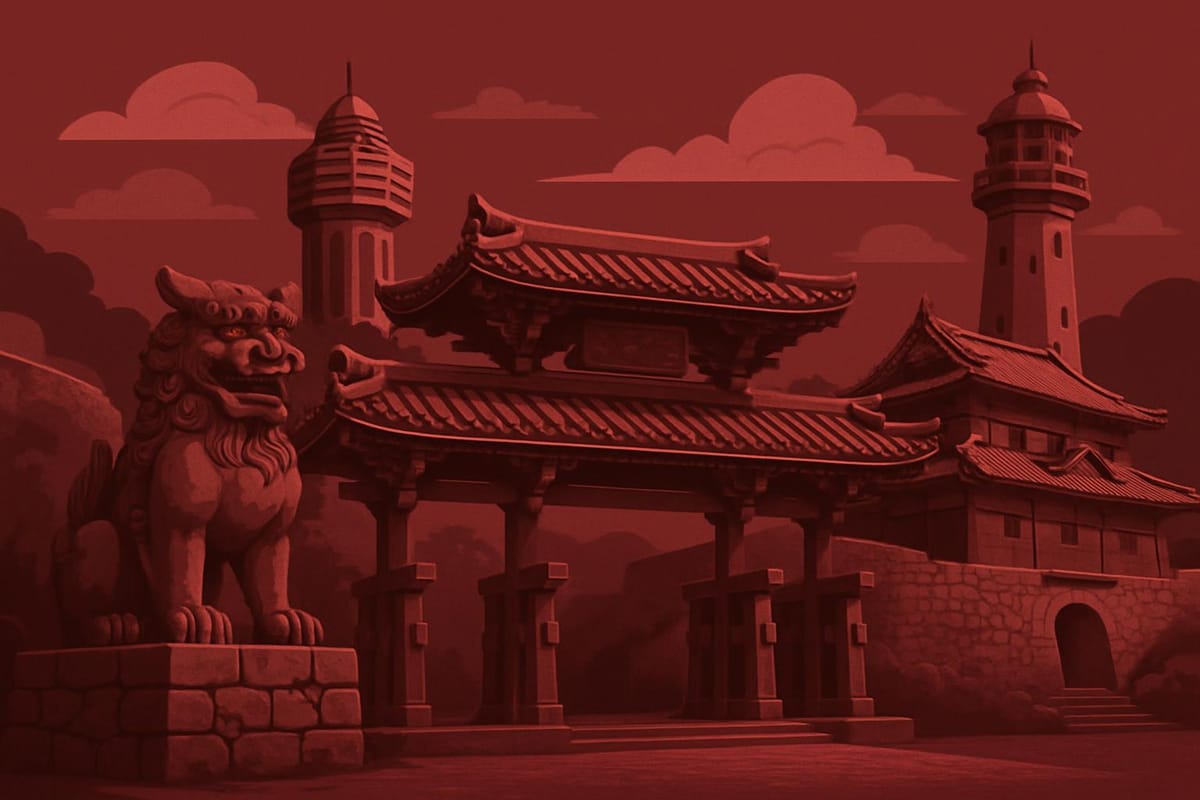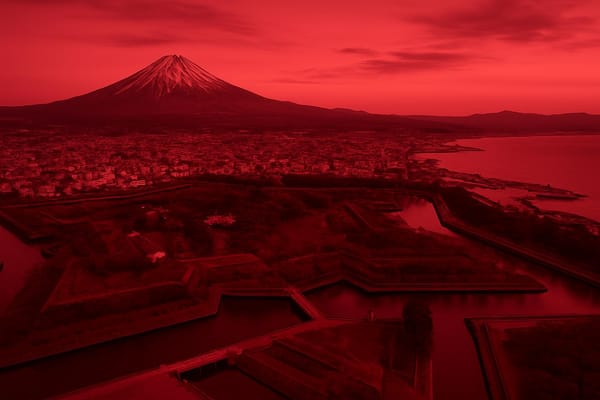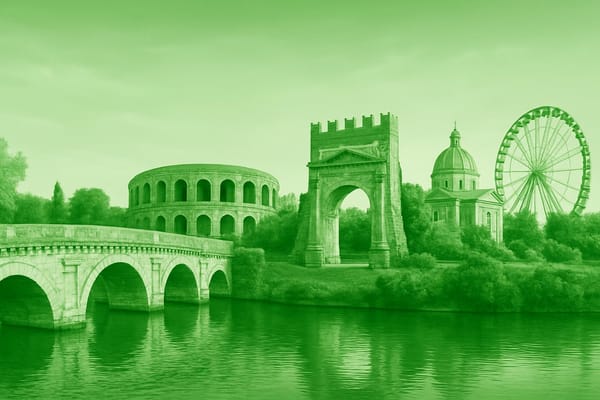Naha
Top attractions: Shuri Castle, Ryukyu culture, coral reefs, street food & diving.

Important things to know about Naha
Naha, Japan, is the vibrant administrative and economic heart of Okinawa Prefecture, blending modern urban life with deep historical roots that shaped its identity as a former center of the Ryukyu Kingdom; as a port city and transportation hub, Naha anchors Okinawa’s connections to the rest of Japan and the wider East Asia region, supporting fisheries, shipping, public administration, and a growing service sector. The city’s streets are defined by a compact city center where municipal offices, small businesses, markets, and residential neighborhoods interweave, creating a dense urban fabric that reflects both postwar reconstruction and contemporary development. Demographically diverse and marked by an ageing population trend common across Japan, Naha still retains a distinctive local character through the Okinawan language influences, community festivals, and multigenerational households that sustain social cohesion. Culinary traditions, craft industries, and local entrepreneurship contribute to the urban economy while public transportation, including a monorail system, facilitates mobility across the city’s ridgeline and coastal plains. Naha’s subtropical setting yields a mild, humid climate that influences building styles, public spaces, and everyday life, encouraging outdoor markets and year-round activity. Municipal planning balances heritage preservation and modernization pressures as the city manages land use, coastal infrastructure, and environmental resilience in the face of typhoons and sea-level concerns. Overall, Naha functions as a cultural and administrative nucleus where regional identity, practical governance, and modern urban dynamics converge to shape life in this distinctive Japanese city.
Sightseeing hot-spots in Naha
Naha, the vibrant capital of Okinawa Prefecture, is a compact city where traditional culture and modern tourism blend seamlessly, making it a top choice for sightseeing in Naha. Strolling down Kokusai Dori (International Street) immerses you in energetic shops, street food stalls and boutique galleries; the scent of Okinawa cuisine - from rafute to sata andagi - tempts visitors at every corner. Nearby, Makishi Public Market offers an authentic market experience where locals and travelers mingle over fresh seafood and tropical produce, while compact cafes and artisan shops invite leisurely exploration, all within walking distance of hotels and the convenient Yui Rail monorail.
For history and culture, Shuri Castle, the former royal palace of the Ryukyu Kingdom, anchors the city’s heritage with restored gates, ornate architecture and panoramic views over Naha. The Tsuboya pottery district reveals centuries-old craft traditions through intimate studios and galleries, and Naminoue Shrine perches above the sea as a serene spot to reflect on Ryukyuan spirituality. Museums such as the Okinawa Prefectural Museum deepen your understanding of island history, language and biodiversity, making cultural sightseeing in Naha rich and informative for tourists who want context as well as photo opportunities.
Beyond museums and markets, Naha’s coastline and harbor make it a natural gateway to Okinawa’s turquoise waters. Naminoue Beach offers a quick seaside escape for families and sunset watchers, while Tomari Port dispatches ferries to the Kerama Islands and other snorkeling havens, perfect for day trips from the city. With its walkable streets, lively food scene and easy access to both heritage sites and beaches, Naha delivers a compact, memorable experience that’s ideal for first-time visitors and repeat travelers exploring Okinawa.
Hotels to enjoy in Naha
Naha is the gateway to Okinawa and offers a rich selection of hotels in Naha that suit every travel style, from boutique stays in the city center to larger resort properties along the coast. Travelers searching for convenient Naha hotels will find many options within easy reach of Naha Airport, making same-day arrivals and departures stress-free. The area around Kokusai Street is particularly popular for visitors who want to be steps away from shopping, nightlife, and street food that showcases Okinawan flavors. For those who prioritize comfort and modern amenities, business-class hotels provide compact yet well-appointed guest rooms, while families often prefer larger rooms or suites with extra space and convenient services. Boutique accommodations celebrate Ryukyuan heritage through local design elements, giving a sense of place that enhances any stay in Naha.
Choosing where to stay in Naha also means deciding between city convenience and seaside relaxation; many travelers opt for beachfront properties a short drive from the center to enjoy sun, sand, and panoramic views. Cultural attractions like Shuri Castle are easily accessible from central hotels, offering a blend of historical sightseeing and urban comfort. Hotel dining often highlights local cuisine, including Okinawan specialties that pair well with a day of exploring. Whether searching for budget-friendly options or upscale resorts, thoughtful amenities such as free Wi-Fi, airport shuttle service, and concierge recommendations help guests make the most of their time in Naha. For anyone planning a trip to Okinawa, selecting the right hotel can turn a simple visit into a memorable island experience.
Restaurants to try in Naha
Naha’s dining scene is a lively blend of tradition and innovation, where restaurants line the bustling Kokusai Street and hidden lanes lead to unforgettable tasting experiences. In the heart of Okinawa, Naha offers everything from cozy family-run stalls serving steaming bowls of Okinawa cuisine and Ryukyu specialties to sleek, modern dining rooms that reinterpret island flavors with global techniques. Visitors often begin at Makishi Public Market, a sensory hub where fresh seafood, tropical fruits and local ingredients set the tone for a day of culinary discovery. Many of the best restaurants in Naha showcase the island’s unique staples-tender pork, bitter gourd, and seaweed-paired with the distinct aroma of awamori, while friendly chefs explain the history behind each dish, making every meal an education as much as a delight.
Beyond traditional plates, Naha’s food landscape also caters to adventurous palates seeking fusion, vegetarian and fine dining options, and late-night izakaya culture that draws crowds until dawn. The restaurants of Naha range from casual yakitori shops and sushi counters offering catch-of-the-day specials to elegant waterfront establishments with sunset views over the harbor. Whether you’re chasing the comfort of a hearty bowl of Okinawan soba, the fresh simplicity of sashimi, or inventive tasting menus that highlight seasonal produce, Naha’s culinary offerings are crafted to please both locals and travelers. For anyone planning a food-focused trip to Naha, Japan, this vibrant mix guarantees memorable meals that celebrate Okinawa’s flavors and hospitality.
Best shopping stops in Naha
Naha is a vibrant shopping destination in Okinawa where the main artery, Kokusai Dori, pulses with boutiques, street stalls and modern department stores that cater to every traveler. Strolling along Kokusai Dori you’ll find a mix of international brands and local labels, along with duty-free options and cozy cafes that make shopping a full-day experience. The contrast between sleek storefronts and traditional crafts is striking: look for Ryukyu glass that twinkles in shop windows, handcrafted shisa lion-dog figures guarding doorways, and colorful bingata textiles that celebrate Okinawan dyeing techniques. For those seeking convenience, established department stores and shopping arcades on and around Kokusai Dori offer tax-free shopping for eligible visitors, making Naha a practical as well as pleasurable place to purchase high-quality souvenirs and fashion.
Beyond the main street, Naha’s local markets and artisan neighborhoods reveal the island’s cultural heart and unique shopping highlights. The lively Makishi Public Market invites you to sample fresh seafood and shop for Okinawan ingredients and culinary souvenirs like Awamori; vendors are friendly and often help package goods for travel. Nearby, the Tsuboya Yachimun Pottery District showcases centuries-old pottery traditions where visitors can buy one-of-a-kind bowls, cups and decorative pieces directly from artists. Exploring these areas, you’ll discover small galleries, craft shops and hidden galleries that specialize in Ryukyu crafts and elegant homewares - perfect for travelers who want authentic Okinawa mementos. Whether you’re hunting for handcrafted ceramics, local liquor, or stylish island fashion, Naha’s shopping scene blends tradition and modernity in ways that make every purchase feel like a story from Okinawa.
Nightlife highlights in Naha
Naha nightlife pulses with a unique blend of Ryukyu tradition and modern energy, centered around the lively Kokusai Dori corridor where neon signs, bustling markets and cozy alleys invite exploration. Evenings begin with aromatic street food and small izakaya bars offering local dishes and awamori, Okinawa’s potent rice spirit, poured with friendly hospitality. For travelers seeking authentic flavor, late-night markets and hidden sake bars reveal the culinary heartbeat of Okinawa, while craft cocktail lounges and beer taps showcase a growing appreciation for artisanal drinks. Strolling down the main avenues, visitors will notice an eclectic mix of karaoke boxes, casual pubs and intimate dining rooms where conversations stretch into the night, making Naha nightlife accessible and memorable for both first-timers and returning guests.
As the night deepens, the city’s music scene comes alive with live bands playing traditional sanshin tunes alongside indie rock, reggae and jazz in small venues and rooftop bars that offer ocean breezes and skyline views. Dance clubs and late-night cafes cater to diverse crowds, while performance spaces host cultural shows that highlight Okinawan song and dance. Easy to navigate and compact, Naha is ideal for bar-hopping, discovering hidden gems and sampling late-night street snacks before catching early-morning ferry connections to nearby islands. Whether you’re chasing a lively party or a relaxed night of local flavor, Naha nightlife delivers an unforgettable blend of culture, music and flavors.
Getting around in Naha
Naha’s transport scene centers on Naha Airport, the main gateway to Okinawa, where travelers find a compact but efficient hub offering numerous domestic flights and a growing number of international connections; getting into the city is straightforward thanks to the Okinawa Urban Monorail (Yui Rail) that runs directly from the airport into central Naha, providing a fast, reliable link to the heart of the city and major streets like Kokusai-dori without the need for a car, and making airport access convenient for visitors and business travelers alike. While trains in Naha are limited to the urban monorail - Okinawa does not have a JR network or island-spanning rail lines - the monorail’s frequent service, easy ticketing and airport station mean public transportation is a realistic option for most short stays; for travel beyond the metro area, buses, ferries and rental cars fill the gap to reach beaches, outlying islands and rural attractions. Overall, the combination of a busy Naha Airport, a user-friendly monorail, and comprehensive surface transport options creates a transport system that’s particularly welcoming to tourists seeking efficient Okinawa travel connections.
Culture must-see's in Naha
Naha, the vibrant heart of Okinawa, pulses with a blend of centuries-old Ryukyuan tradition and lively urban energy that makes it a must-see for cultural travelers. Strolling down Kokusai-dori you will encounter bustling shops, local eateries serving Okinawan delicacies, and the famous Makishi Public Market, where the aromas of fresh seafood and simmering Awamori invite visitors to taste authentic flavors. The city’s skyline is anchored by the iconic Shuri Castle, a symbol of the Ryukyu Kingdom whose colorful architecture and ornate gates reflect a unique cultural lineage distinct from mainland Japan. Beyond the monuments, neighborhoods like Tsuboya showcase centuries of craftsmanship with ceramics and Ryukyuan crafts on display, while boutique galleries preserve traditional textiles like bingata and musical heritage centered around the soulful sanshin.
Cultural life in Naha is not limited to museums; it thrives in performance and festivals that animate the city year-round. Seasonal events highlight the rhythmic intensity of Eisa dance, communal drumming and parades that draw both locals and visitors into the celebration, and smaller venues frequently host live sanshin performances and storytelling that deepen appreciation for Okinawan identity. For travelers seeking an immersive Naha culture experience, workshops in pottery-making, traditional music lessons, and tastings of local spirits provide hands-on engagement, while neighborhood festivals and craft markets offer authentic encounters with daily life. Whether you come for historical sites, culinary exploration, or performing arts, Naha delivers a rich, multifaceted cultural experience that sings with the island’s enduring spirit.
History of Naha
Naha, the vibrant capital of Okinawa Prefecture, grew from a cluster of fishing villages into the thriving maritime gateway of the Ryukyu Kingdom, a unique polity that for centuries balanced diplomacy and trade between China, Japan, and Southeast Asia. Beginning as the port towns of Tomari and Nishi, Naha's sheltered harbor and strategic location fostered a culture of commerce that produced distinctive arts, ceramics, and religious traditions. Under the Ryukyu kings, Naha became the island’s principal trade hub, where Chinese junks, Japanese vessels, and Southeast Asian ships converged, bringing goods, ideas, and syncretic cultural practices. The city’s close ties with Ming and Qing China shaped its administrative systems and courtly culture, while local markets and craft quarters like Tsuboya nurtured pottery and everyday commerce. Even as political power centralized at Shuri Castle, Naha remained essential as the kingdom’s window to the wider world, its streets animated by merchants, interpreters, and the ebb and flow of international goods that forged a cosmopolitan identity long before modern tourism.
The modern history of Naha is marked by dramatic transformations that underscore its resilience and ongoing cultural significance. After the Meiji-era annexation of the Ryukyu Kingdom and the creation of Okinawa Prefecture, Naha evolved under Japanese administration and later suffered near-total destruction during the Battle of Okinawa in World War II, a cataclysm that reshaped urban life and memory. Under American occupation and then post-1972 reversion to Japan, the city embarked on extensive reconstruction, expanding the port, establishing Naha Airport connections, and modernizing infrastructure such as the Yui Rail monorail to support growing domestic and international tourism. Landmark avenues like Kokusai-dori now buzz with shops, restaurants, and cultural experiences that attract visitors seeking both beach resorts and historical depth. Efforts to restore symbols of Ryukyuan heritage, including the rebuilding of Shuri Castle after its 2019 fire, reflect a commitment to preserving Naha’s past while promoting sustainable tourism and economic development. Today’s Naha blends centuries-old traditions with contemporary urban life, positioning it as a must-visit destination for those curious about the layered history of Naha, Japan, and the enduring legacy of the Ryukyu Islands.



